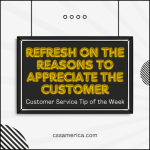In the article titled “Penguins offer freebie game with job-hunting twist,” the Associated Press describes a pre-season program where attendees to an exhibition game of the National Hockey League’s Pittsburgh Penguins will attend free (http://www.google.com/hostednews/ap/article/ALeqM5j6iKWLJLaijtjwodlAwtulAtXjzgD9IAENCG1). That’s right, 18,000 fans and $0 in ticket revenue.
About 8,000 of the tickets will be given out so fans can attend an “in-game” job fair. The other 10,000 tickets will be donated to local children’s charities and youth hockey leagues.
While I’m not suggesting great Fan Relations requires you to give away the house for free, there are positive lessons to be learned even if you can’t forego the lost ticket revenue.
First, not everything has to be an immediate benefit to your organization; understand that nurturing the customers of tomorrow is important to any organization’s long-term strategy. It’s about the long-term relationship, not the one-time transaction.
Second, if you invite the child, the parent will come (or at least show an interest and appreciation as well).
Third, know your customers and their situations. With the economy like it is today, what will attract more people who are not normally hockey fans – a Sidney Crosby bobblehead or a job interview?
Fourth, find ways to make the community as a whole a fan of yours. Find a niche where you can give back; give back for the good of the community today; it will bear fruit for you down the road.
Learn from the 2010 ESPN #1 rated Fan Relations organization (the Penguins)…even if you don’t have 18,000 free products or services to give away.
Interested in improving your company’s customer service? See more information at: http://www.cssamerica.com/
Check out our new customer service book at http://www.amigreatat.com/





















